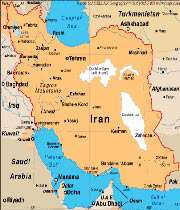The Iranian Language Family
Middle Iranian Languages
part 2

Sogdian, among the less dominants Middle Iranian languages, was surely the most influential because of its important role as a mediating language of the “Silk Road”. Sogdian merchants, who dominated the trade between China and Central Asia, and even between China and India, decidedly preserved their language, even when they settled permanently in other lands such as China. Structurally, Sogdian is notable for its preservation of Old Iranian archaisms, including much of its morphology, as well as saving many of the grammatical structures of Old Iranian. Most of our sources for studying Sogdian are the inscriptions and administrative correspondences discovered at Mt. Mugh near Panjikent in Tajikstan, as well as some Manichean and Christian texts found during the discoveries at the great monastery of Turfan (now in Chinese Turkistan). Among these are fragments of Iranian legends known better in their New Persian forms, as well as fascinating fables and stories which provide us with a window to the rich culture of Sogdiana and its language.
After Islam, either Persian or various Turkic dialects slowly replaced Sogdian as the dominant languages of Central Asia. There are, however, attestations of Sogdian words in the works of post-Islamic authors and poets, as well as dictionaries, showing the survival of the language for a few centuries after Islam.
Today, a local language of the Zarafshan River Valley, called Yaghnobi, is thought to be the modern development of a Sogdian rural dialect. Sogdian was also written in a script derived from Aramic which used heterograms, while the Manichaean script was also used occasionally for recording religious texts of that language.
Khwarazmian was a close relative of Sogdian and an important trade and scientific language, spoken primarily in the lower Oxus River region known as Khwarazmia (alt. Choresmia). Evidence of Khwarazmian can be found in the works of the astrologer Biruni[11], and also the Khwarazmian-Arabic dictionary of Zamakhshari[12], which testify to its continuous importance in Central Asia after the conversion of that region to Islam. We know very little of Khwarazmian prior to Islam, but few inscriptions lead us to believe that is was an important language that was written in another script derived from Aramaic. After Islam, Khwarazmian developed a script based on the Arabic one in which special signs was provisioned to represent peculiar Khwarazmian sounds. This seems to have given the language a new found energy that guaranteed its survival until the end of the first millennium AD and even beyond, although like Sogdian it seems to have eventually lost its position to Persian and then Turkish.
Bactrian, another member of the eastern branch of the Iranian languages, was the language of the province of Bactria in eastern Iran (present day province of Balkh, Afghanistan). Following the conquest of the Achaemenid Empire by Alexander, a Greek kingdom was established in Bactria, deeply influencing the culture of the region. In subsequent centuries, Tocharian and Saka tribes caused the demise of the Greco-Bactrian kingdom and established the powerful kingdom of Kushan. In turn, the Kushans adopted the local Bactrian language for their kingdom and took it all around their area of influence, down to northern India (Taxila). After Islam, New Persian gradually replaced Bactrian, in a similar fate as other Central Asian languages. Bactrian is known from both inscriptions of Kushan kings such as Kanishka I, as well as texts such as contracts and land-deeds that have been recently discovered. As such, it is fast becoming one of the best known languages of the Eastern Iranian branch. It was written in an alphabet derived from Greek, and even after the invasion of the Kushans by the Sasanian emperors, Greek alphabet continued to be used for writing the Bactrian language.
Saka is the general name for a group of closely related dialects of an Eastern Iranian language. No written evidence of *Old Saka, save a few names and terms in Old Persian and Greek, has so far been discovered, but its various Middle Iranian dialects suggest a common ancestor. Since different Saka tribes occupied vast territories from the Chinese Turkistan to Eastern Europe, we always have to remember the existence of the various dialects of Saka. For example, in the northern Black Sea region and the Caucasus, later descendants of the Saka tribes such as the Alans[13] probably spoke a language we call Alano-Saka. In other places like the eastern Caspian region or present day Chinese Turkistan, they spoke various dialects like Khotanese Saka and Tumshuq Saka. Nevertheless, it is assumed that all of these dialects were more or less mutually understandable for the speakers of each other, probably due to their nomadic life style which increased contact among the various tribes. Eastern dialects of Saka, most prominently Khotanese, are known to us via various religious texts, often Buddhist in nature, following the fact that the Sakas had largely converted to that religion.
Today, a modern development of Alano-Saka, called Ossetic, is spoken in two dialects by a small group of people in Southern Russia[14] and is written in the Cyrillic alphabet. At least one language of the Pamir region, called Wakhi, can be credited with a Saka substratum, as well as another known as Ishkashimi.
Saka was originally written in different scripts, including the Kharoshti script of northern India and eventually in a script derived from Devanagari. Modern descendants of Saka languages often lack a writing system or are written in Perso-Arabic and Cyrillic alphabets, as well as the pieces recorded by modern philologists in modified Latin script.
Footnotes:
[11] Athar al-Baqiyya and or Mal ul- Hind
[12] Mugaddimatul-Adab, by Zamakhshari
[13] The westerners knew Sakas of the Northern Black Sea region as Scythians.
[14] Republics of Northern and Southern Ossetia, located north of Georgia and South of Russia.
Source:
iranologie.com
Other Links:
Eastern Iranian Languages: part 1
The Iranian Language Family (part 1)